Falafel! It’s one of my all time favorite snacks. This falafel recipe has hundreds and hundreds of positive reviews. Why? Because it’s just that delicious! Making authentic, traditional falafel is an interesting process – and it may be brand new to you. Never fear! I am here to walk you through each step, so you can achieve crispy, tender, tasty falafel every single time.
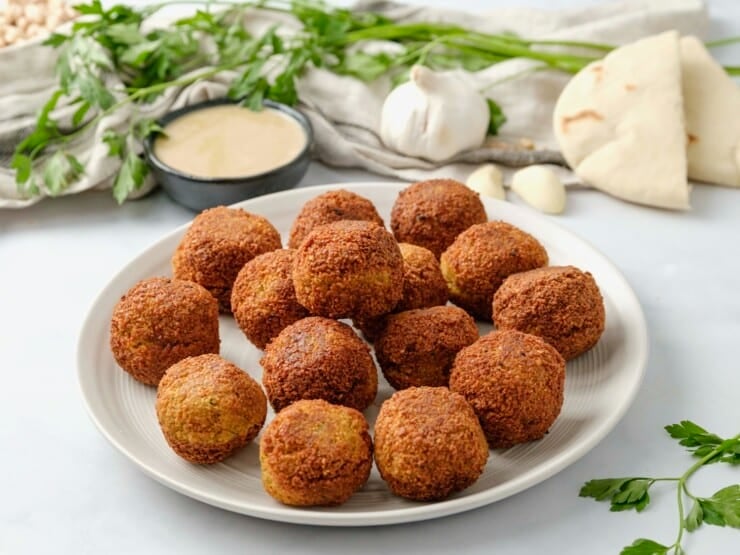
What is Falafel?
Falafel are crisp and delicious deep-fried legume fritters made with beans, spices, onions, and herbs. Legumes are well soaked, then ground up and mixed with other ingredients. Next, the mixture is formed into small balls or patties, then fried in hot oil. The pre-soaked legumes are cooked during the frying process. Most falafel today is made with chickpeas (aka garbanzo beans), however in Egypt and other areas of the Middle East, fava beans are the legume of choice. It is often served alongside other popular regional Mediterranean dishes like hummus, as well as shawarma made from lamb or chicken.
The History of Falafel
This Middle Eastern food has a very long history. The word falafel may descend from the Arabic word falāfil, a plural of the word filfil, meaning “pepper.” Legume fritters, including versions made with fava beans and lentils, have existed in the Middle East for thousands of years.
According to The Encyclopedia of Jewish Food, written by my friend Gil Marks: “The first known appearance of legume fritters (aka falafel) in the Middle East appears to be in Egypt, where they were made from dried white fava beans (ful nabed) and called tamiya/ta-amia (from the Arabic for ‘nourishment’); these fritters were a light green color inside. Many attribute tamiya to the Copts of Egypt, who practiced one of the earliest forms of Christianity. They believed that the original state of humankind was vegetarian and, therefore, mandated numerous days of eating only vegan food, including tamiya.”
Likewise, the Torah, the Song of Songs, the Mishnah, and the Talmud all mention deep fried lentil fritters, known as “ashishim.” This means early forms of falafel were enjoyed in this region since biblical times, at least. That’s some pretty ancient falafel!
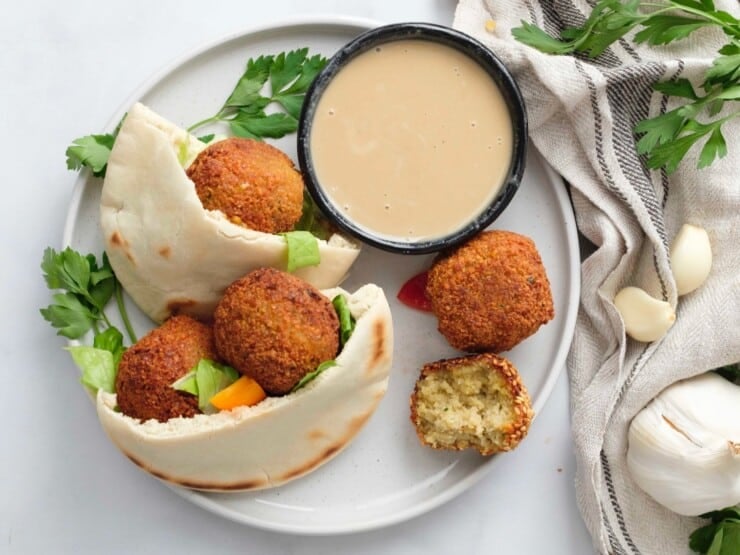
Is a falafel healthy?
This traditional falafel recipe is a great vegan source of protein for people who have cut meat out of their diet. It’s relatively low in fat, and has no cholesterol if you fry it in a heart-healthy, cholesterol-free oil. And if you top it with vegetables in a pita, it becomes a filling and nourishing meal.
In the Middle East, and particularly in Israel, falafel stands are as numerous and plentiful as fast food restaurants are in the United States. Falafel is a quick and easy “meal on the go,” but it’s more nourishing and better for your heart than a burger and fries.
The idea of stuffing falafel into pita pockets is actually an invention of Yemenite Jewish immigrants to Israel. The introduction of pita sandwiches made falafel portable, which expanded its popularity and made it into the number one “fast food” in Israel. Sure beats a Big Mac, if you ask me!
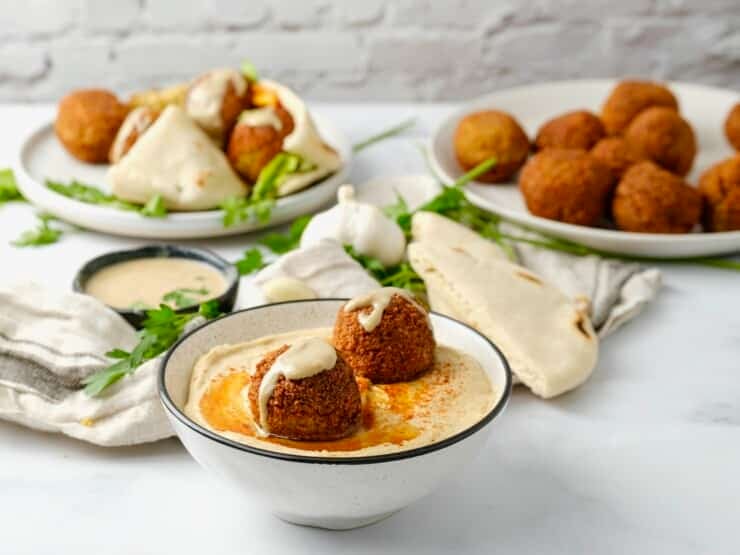
What do I serve with falafel?
You can serve falafel in a variety of ways. A falafel pita sandwich is one of the more popular presentations. In this serving style, a pita pocket provides the perfect “sandwich bread” for the fritters. Stuffed with hummus and other salad-like accompaniments, a falafel pita is truly a treat. Likewise, restaurants often serve these fried vegan fritters with hummus and tahini sauce (known as a “falafel plate.”) Toum, a thick Middle Eastern garlic sauce, makes a delicious accompaniment as well.
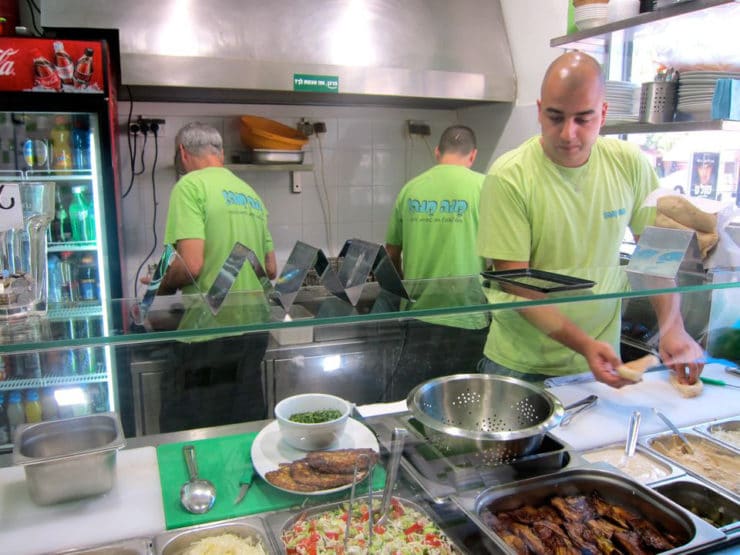
Enjoying Falafel Recipes in the Mediterranean and Middle East
I travel in the Mediterranean quite a bit, and falafel is my favorite on-the-go street food in this region. It is popular in many countries, including Egypt, Syria, Lebanon, Greece, and Turkey. And in Israel it has become ubiquitous, found in nearly every neighborhood. Ask any Israeli, and they’re sure to have a favorite falafel stand or restaurant.
On one of my first trips to Israel, our friends took us to Mana Mana Falafel in Tel Aviv. It was one of my very first experiences with Israeli falafel. Three generations ran the place — a grandfather, father, and son.
When I was there, I enjoyed a truly amazing falafel pita — crispy on the outside, hot and fluffy on the inside, with fresh toppings grown on local kibbutzim. Apparently the restaurant has changed management since then, but I’ll fondly remember it as one of my favorite falafel experiences.

Many years have passed since then, and I’ve had the pleasure of enjoying falafel all over Israel. I’ve also cooked falafel in local kitchens with families who grew up making this special dish. Currently, I really enjoy the falafel from Hakosem – otherwise known as “The Magician.” My friend Ariel Rosenthal runs this amazing food stand. If you’re ever in Tel Aviv, I highly recommend making a special trip to Hakosem! The lines are long, but it’s worth the wait.
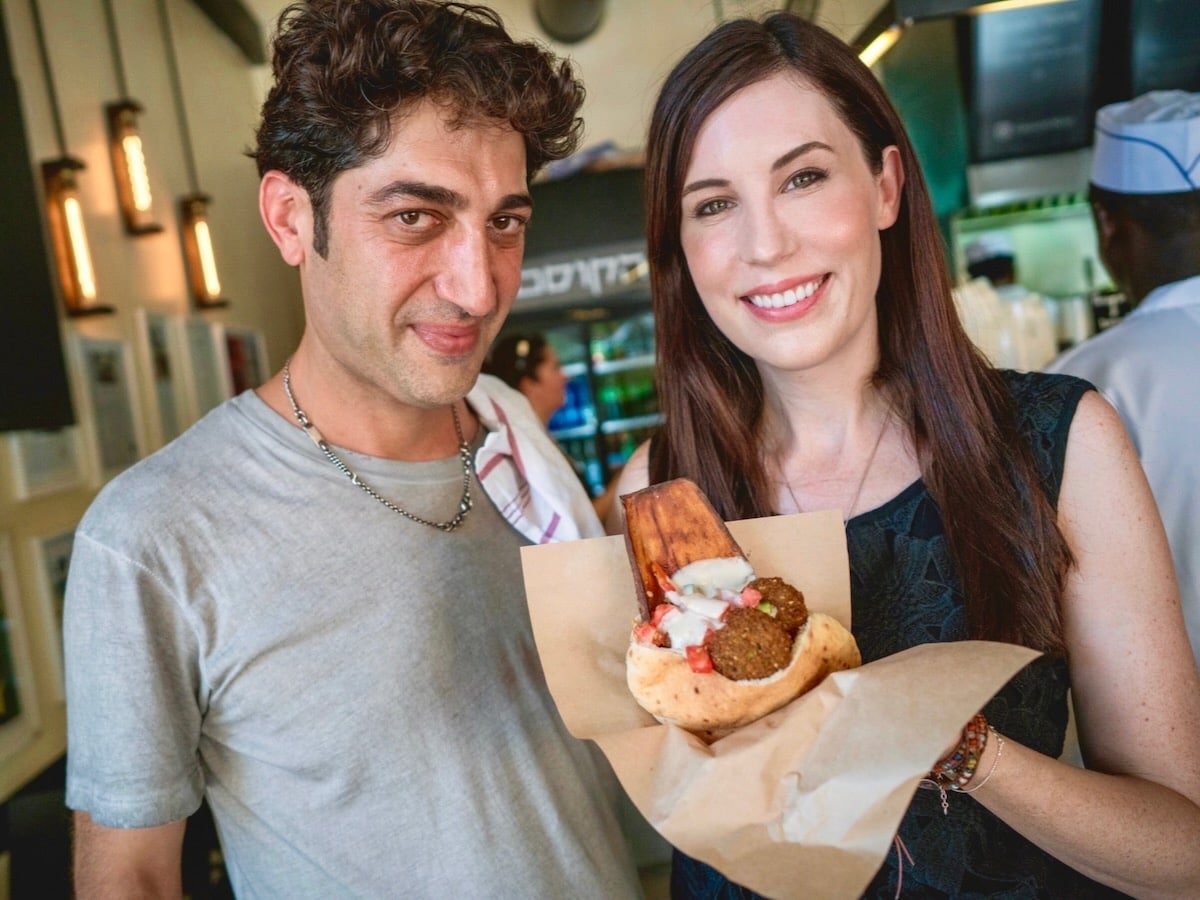
Falafel can be made with either fava beans or chickpeas. The following traditional falafel recipe contains methods for using either legume. Historically, early versions of falafel were made with fava beans (and even earlier versions were made of lentils). Consequently, fava beans are still the falafel “legume of choice” in Egypt and other Arab countries. On the other hand, Israeli falafel is almost universally made from chickpeas. This is because many Jews have a medical deficiency called G6PD, a hereditary enzymatic deficiency that can be triggered by fava beans. Chickpeas, or garbanzo beans, provide the perfect substitute.
Here is my recipe for chickpea falafel, along with a few variations you can try. I have also included an Egyptian falafel recipe variation at the end of this post, if you would like to try making it with fava beans. It’s greener and spicier than Israel-style falafel.
You will need to soak dried chickpeas overnight for your falafel to turn out right; canned beans are too tender and contain too much moisture to achieve the right consistency. Don’t cook the beans, because this will result in a mushier and denser falafel, which is not the proper texture.
I’ve also included instructions for constructing your own falafel pita. Here is my favorite way to make it… start with a layer of hummus deep inside the pocket, then add the falafel, lettuce, tomatoes, and a few dill pickle slices. Top with a thin layer of tahini sauce.
Okay, I’m making myself hungry! 🙂 Enjoy!
Recommended Products:
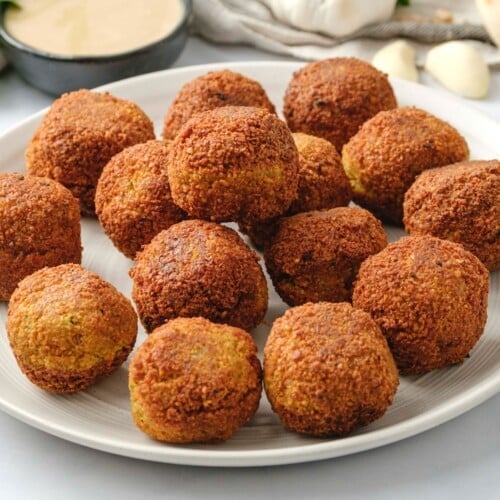
Falafel
Ingredients
- 1 pound dry chickpeas (also known as garbanzo beans) – you must start with dry, do NOT substitute canned, they will not work!
- 1/2 teaspoon baking soda
- 1 small onion, roughly chopped
- 1/4 cup chopped fresh parsley
- 3-5 cloves garlic (I prefer roasted garlic cloves)
- 1 1/2 tablespoon flour or chickpea flour
- 1 3/4 teaspoon salt
- 2 teaspoon cumin
- 1 teaspoon ground coriander
- 1/4 teaspoon black pepper
- 1/4 teaspoon cayenne pepper
- Pinch of ground cardamom
- 1 teaspoon baking powder (optional – makes the falafel more fluffy)
- Vegetable oil for frying – avocado oil, grapeseed oil, sunflower oil, canola oil, and peanut oil all work well (I prefer avocado oil)
NOTES
Instructions
- One day ahead: Pour the chickpeas into a large bowl and cover them by about 3 inches of cold water. Add 1/2 tsp of baking soda to the water and stir; this will help soften the chickpeas. Cover the bowl and let them soak overnight in a cool, dark place or chill in the refrigerator. The chickpeas should soak at least 12 hours and up to 24 hours, until tender (change soaking water for fresh water after 12 hours).

- They will double in size as they soak – you will have between 4 and 5 cups of beans after soaking.

- Drain and rinse the chickpeas well. Pour them into your food processor along with the chopped onion, garlic cloves, parsley, flour or chickpea flour (use chickpea flour to make gluten free), salt, cumin, ground coriander, black pepper, cayenne pepper, and cardamom. Note: if you have a smaller food processor, you will want to divide the ingredients in half and process the mixture one batch at a time.

- Pulse all ingredients together until a rough, coarse meal forms. Scrape the sides of the processor periodically and push the mixture down the sides. Process until the mixture is somewhere between the texture of couscous and a paste. You want the mixture to hold together, and a more paste-like consistency will help with that… but don't over-process, you don't want it turning into hummus!

- Once the mixture reaches the desired consistency, pour it out into a bowl and use a fork to stir; this will make the texture more even throughout. Remove any large chickpea chunks that the processor missed.Cover the bowl with plastic wrap and refrigerate for 1-2 hours.Fill a skillet with oil to a depth of 1 ½ inches. Use cooking oil with a high smoke point (oil suggestions can be found in the ingredient list). Heat the oil slowly over medium heat. The ideal temperature to fry falafel is between 360 and 375 degrees F; the best way to monitor the temperature is to use a deep fry or candy thermometer. After making these a few times, you will start to get a feel for when the oil temperature is "right."Meanwhile, form falafel mixture into round balls or slider-shaped patties using wet hands or a falafel scoop. I usually use about 2 tbsp of mixture per falafel. You can make them smaller or larger depending on your personal preference. The balls will stick together loosely at first, but will bind nicely once they begin to fry.

- If the balls won't hold together, place the mixture back in the processor again and continue processing to make it more paste-like. Keep in mind that the balls will be delicate at first; if you can get them into the hot oil, they should bind together and stick. If they still won't hold together, you can try adding 2-3 tbsp of flour or chickpea flour to the mixture. If they still won't hold, add 1-2 eggs to the mix. This should fix any issues you are having.Before frying my first batch of falafel, I like to fry a test one in the center of the pan. If the oil is at the right temperature, it will take 2-3 minutes per side to brown (5-6 minutes total). If it browns faster than that, your oil is too hot and your falafels will not be fully cooked in the center. Cool the oil down slightly and try again.

- When the oil is at the right temperature, fry the falafels in batches of 5-6 at a time until golden brown on both sides. Once the falafels are fried, remove them from the oil using a slotted spoon. Let them drain on paper towels.

- Serve the falafels fresh and hot; they go best with a plate of hummus and topped with creamy tahini sauce. You can also stuff them into a pita.

- SESAME FALAFEL VARIATION: After forming the balls or patties, dip them in sesame seeds prior to frying. This will make the falafel coating crunchier and give it a slightly nutty flavor.

- HERB FALAFEL VARIATION (GREEN FALAFEL): Add ½ cup additional chopped green parsley, or cilantro, or a mixture of the two prior to blending.

- TURMERIC FALAFEL (YELLOW FALAFEL): Add ¾ tsp turmeric to the food processor prior to blending.

- HOW TO MAKE A FALAFEL PITA: Making a falafel pita is actually really simple. The two main ingredients are pita bread and falafel. Cut the pita bread in half to form two “pockets.” Each pocket is a serving size. Stuff the pocket with falafel, as well as any add-ons you fancy.Here are some traditional add-ons that can be added to your pita: tahini sauce, shredded lettuce, diced or sliced tomatoes, Israeli salad, onions, dill pickles, hummus, tabouli.Here are some less traditional add-ons that are also tasty: sprouts, cucumber slices, roasted peppers, roasted eggplant slices, sunflower seeds, french fries, feta cheese, yogurt, tzatziki.

Nutrition

tried this recipe?
Let us know in the comments!
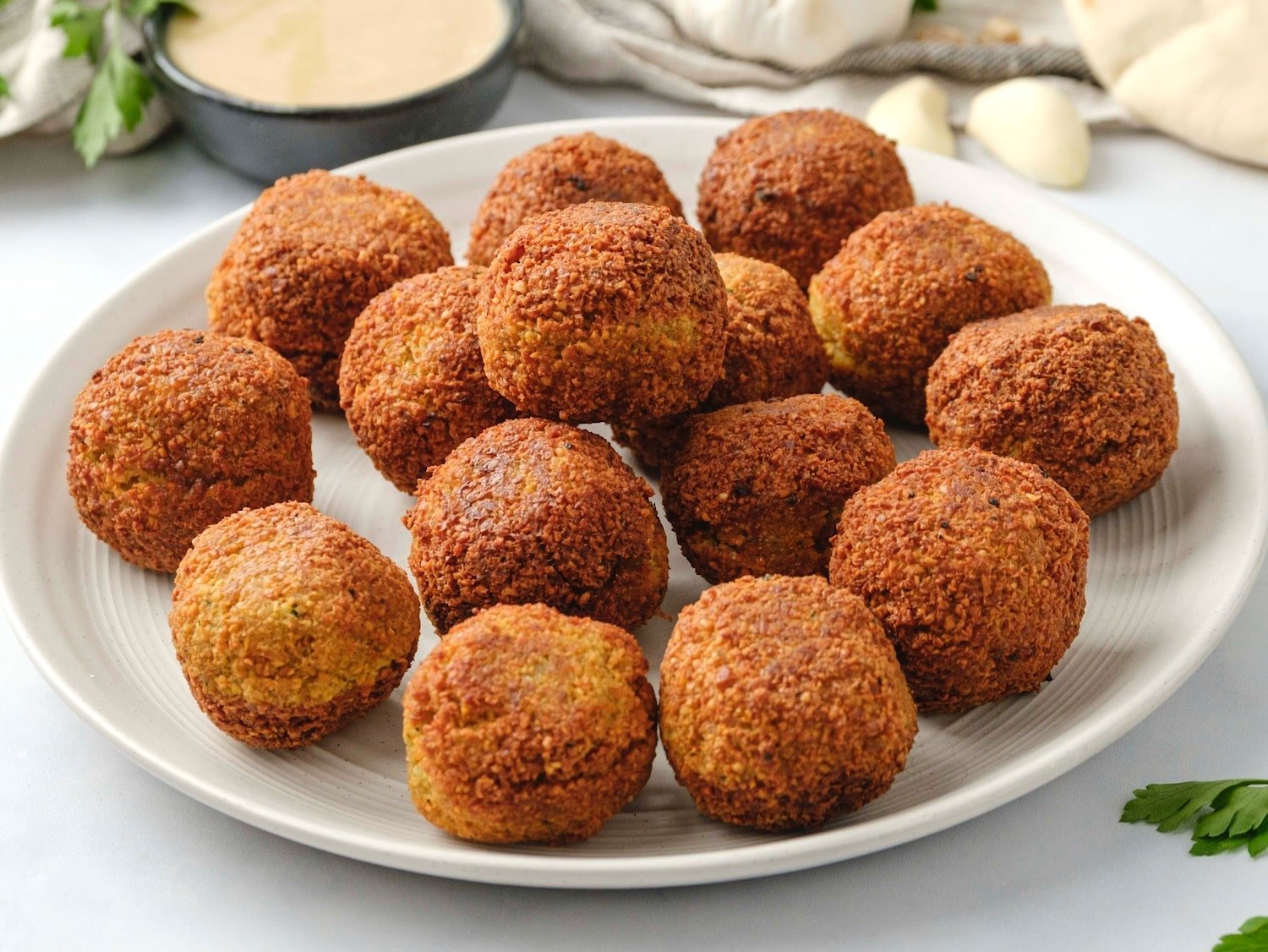

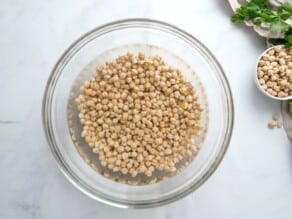
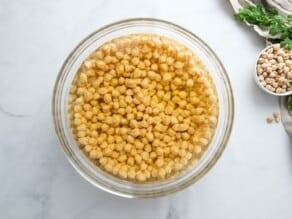
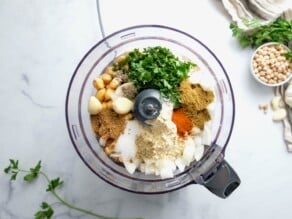
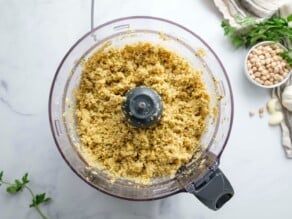
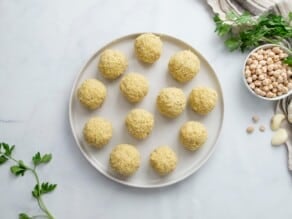
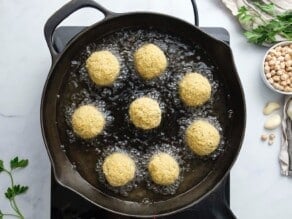
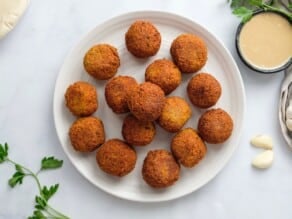

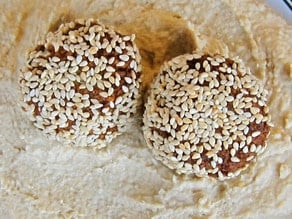
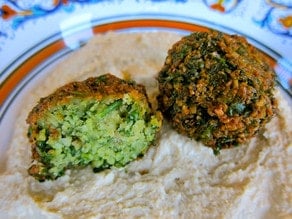
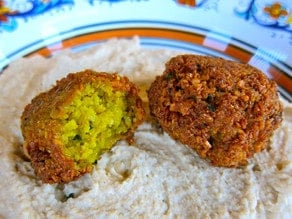



Hi, sorry if this is a dumb question, but I thought you had to (not just soak but also) cook the chickpeas first before using them in any falafel recipe? I am not used to using soaked but uncooked beans in recipes. Can I just double check this with you?
In other words, just frying the uncooked beans at the end of recipe for a few minutes in oil (to make the falafels) which really just crisps the outside but leaves the inside tender and largely incompletely cooked doesn’t seem like enough cooking for the chickpeas. Aren’t the chickpeas remaining uncooked essentially, especially on the inside of the falafel?
Isn’t it bad to consume beans not completely cooked?
Actually, traditional falafel is made with soaked beans, not cooked beans. The frying process cooks the beans and makes them tender – the inside of the falafel should be quite cooked when complete. If you prefer using pre-cooked beans, try this recipe instead: https://toriavey.com/spicy-panko-chickpea-patties-recipe/
Hi there, how long will the mixture keep in the fridge?
A great recipe, easy to follow and the falafel are absolutely delicious!
Loved it! Instructions were really to follow, they came out pretty well on the first try!
*note I did not add optional baking soda to the mix
Some of my personal suggestions:
– I found it to be a tad bit dry – may be an error on my part. I’m might invest in getting a scoop to pack them dense so that they retain more moisture when fried. Would make the prep much faster too. Could also add extra parsley or whatever vegetable for the moisture
– Flavours not strong enough for me. Could use a bit more (1/4 tsp?) of all the spices.
Also try processing the mixture just a bit more, so that it is more densely packed – this should help with the moisture issue.
Did you mean to put baking soda and baking powder in the recipe for falafel?
Please see the notes section above for answer to this question.